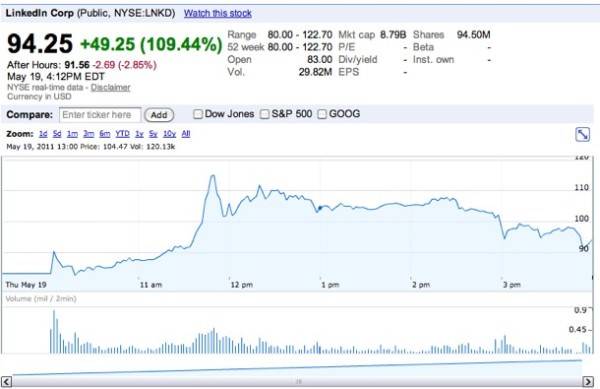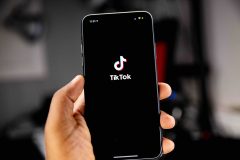LinkedIn is valued at $8.79 billion after its first day as a public company. Founder and chairman Reid Hoffman and friends are drinking champagne tonight, that is for sure. It is the highest valuation after an IPO of a tech company since Google astonished the world in 2004.

It is mildly amazing for a social network that has never been profitable and never made more than $250 million in a year. What are investors seeing that the rest of us cannot? In a word … Jobs. This is what Job Board 2.0 has become — data rich and interactive across a social graph.
It may seem like it, but the word “social” and a couple talented engineers do not a $9 billion company make. LinkedIn is valuable for the same reason that Facebook is valuable – it has oodles of data. Where LinkedIn’s assets lay are in the specificity of its data. Jobs are what power a capitalist economy and when it comes to employment hunting, there are not many places on the Internet that have more data than LinkedIn.

Data is like the gasoline of the Internet. Data comes from users. The Internet has matured to a point in the Western world where companies are now seeing huge growth in a short period of time in terms of users. LinkedIn has 100 million users that at one point or another have uploaded their basic employment information to the site. Most have uploaded full resumes, teaming with data like phone numbers and addresses, employment and education history.LinkedIn’s primary revenue comes from its hiring solutions and premium accounts, both of which are steps to uncover more data on the service.
LinkedIn’s growth and that of other social networks is not just a matter of having user data for the sake of having data. Numbers without context are useless. What LinkedIn has is personally identifiable data. Corporations and investors want to be able to track the consumer market as closely as possible to signal trends that will inform their next product launches. LinkedIn is a trove of data not just about people, but how people are making their money and what industries they are working in and how they connect to each other.
Big User Base + Jobs = Big Market Opportunity
Tech companies are taking longer to reach IPO than they were a decade ago when the industry bubble popped. LinkedIn was founded in 2003 and has been creating its user base for the better part of a decade. Companies are growing faster than they ever have before. LinkedIn user base has nearly doubled its user base since 2008. Twitter has certainly eclipsed 200 million accounts and possibly 300 million. Social gaming company Zynga jumped to near 100 million users in a matter of months. Investors are eyeing these big numbers and eagerly awaiting their public debuts. LinkedIn was the first and benefitted from that market sentiment.
“Tech is back,” said Matt Barrie, CEO of Freelancer.com. “I think we are back to the golden age in a big way.”
Freelancer is a LinkedIn competitor and could not be happier for the spark that LinkedIn has ignited; “I think the doors have been kicked down and a freight train driven right through it, Barrie said.
The affect of LinkedIn’s IPO to the Internet is subtle and Barrie believes that jobs are a big part of the professional social networks success.
“Look at the United States, Australia, Canada, New Zealand and the U.K.,” said Barrie referencing the English-speaking Internet base. “With [the Western world] coming online, paying $10 a day, the first thing they are going to want are jobs.”
LinkedIn has the most traction and the most data in the professional social network environment, but it is not a standout and future monopoly, the way Google was when it debuted to the public. Google’s technology was above and beyond what came before. That is not the same for LinkedIn. The traditional jobs sites – Monster, CareerBuilder – remain strong players in employment data and there are niche job boards across the Internet like JournalismJobs.com that are go-to destinations for certain industries.
There are other startups looking to gain traction by using employment data. BranchOut is a professional social network that extrapolates employment data from Facebook’s 700 million or so users and recently raised $18 million in series. Like LinkedIn, BranchOut understands the meaning of data, interaction and connections when it comes to employment. With today’s rousing success by LinkedIn, there will be more players in the employment connection space coming down the pipe.










